Hyundai i10 vs Kia Stonic – Which one offers the better deal?
Compare performance, boot capacity, efficiency and price at a glance.
Find out which car is the better choice for you – Hyundai i10 or Kia Stonic?
Here’s where it gets real: The technical differences in detail
Costs and Efficiency: Looking at overall running costs, both models reveal some interesting differences in everyday economy.
Hyundai i10 has a clearly perceptible advantage in terms of price – it starts at 14600 £, while the Kia Stonic costs 19400 £. That’s a price difference of around 4886 £.
Fuel consumption also shows a difference: the Hyundai i10 manages with 4.90 L and is therefore a bit more efficient than the Kia Stonic with 5.50 L. The difference is about 0.60 L per 100 km.
Engine and Performance: Power, torque and acceleration say a lot about how a car feels on the road. This is where you see which model delivers more driving dynamics.
When it comes to engine power, the Kia Stonic has a hardly perceptible edge – offering 100 HP compared to 90 HP. That’s roughly 10 HP more horsepower.
In acceleration from 0 to 100 km/h, the Kia Stonic is hardly perceptible quicker – completing the sprint in 11.30 s, while the Hyundai i10 takes 11.40 s. That’s about 0.10 s faster.
In terms of top speed, the Kia Stonic performs minimal better – reaching 179 km/h, while the Hyundai i10 tops out at 175 km/h. The difference is around 4 km/h.
There’s also a difference in torque: the Kia Stonic pulls slightly stronger with 200 Nm compared to 172 Nm. That’s about 28 Nm difference.
Space and Everyday Use: Whether family car or daily driver – which one offers more room, flexibility and comfort?
Both vehicles offer seating for 5 people.
In curb weight, the Hyundai i10 is somewhat lighter – 996 kg compared to 1195 kg. The difference is around 199 kg.
In terms of boot space, the Kia Stonic offers evident more room – 352 L compared to 252 L. That’s a difference of about 100 L.
In maximum load capacity, the Kia Stonic performs hardly perceptible better – up to 1155 L, which is about 105 L more than the Hyundai i10.
When it comes to payload, Kia Stonic minimal takes the win – 455 kg compared to 423 kg. That’s a difference of about 32 kg.
Our conclusion: The Hyundai i10 proves to be won narrowly and thus becomes our DriveDuel Champion!
Overall, Hyundai i10 is the better all-rounder in this comparison.
Hyundai i10
The Hyundai i10 impresses with its compact design, making it an ideal choice for navigating through busy urban environments. Its interior is surprisingly spacious, offering drivers and passengers comfort beyond what one might expect from a city car. The model combines efficiency and practicality, making it an attractive option for those seeking both economy and functionality in their daily commute.
details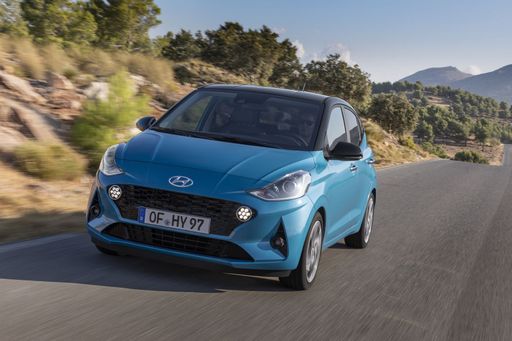 @ hyundai.news
@ hyundai.news
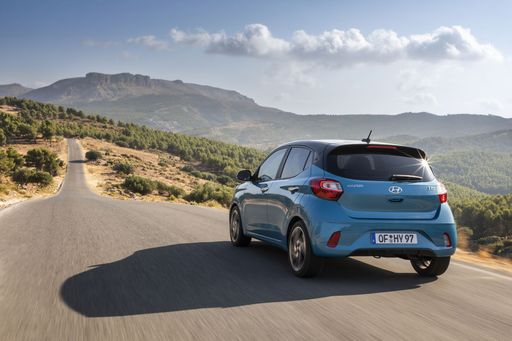 @ hyundai.news
@ hyundai.news
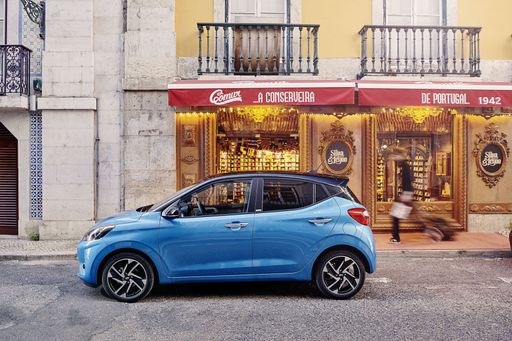 @ hyundai.news
@ hyundai.news
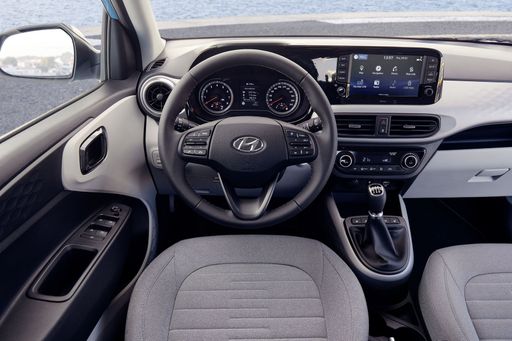 @ hyundai.news
@ hyundai.news
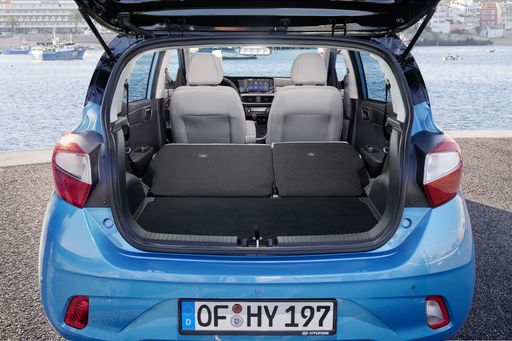 @ hyundai.news
@ hyundai.news
Kia Stonic
The Kia Stonic is a compact crossover that seamlessly blends bold design with practical functionality. Its distinctive, eye-catching exterior is complemented by a well-crafted interior offering a comfortable ride and intuitive technology for today's drivers. The Stonic is perfect for urban environments, providing agility and efficiency without compromising on style or performance.
details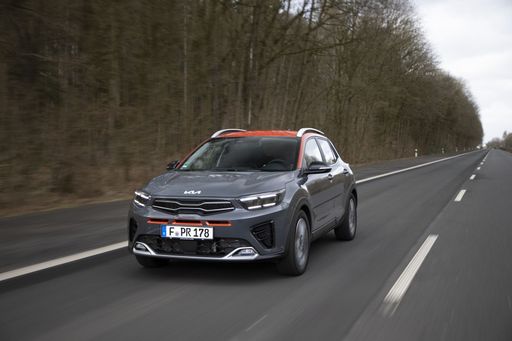 @ press.kia.com
@ press.kia.com
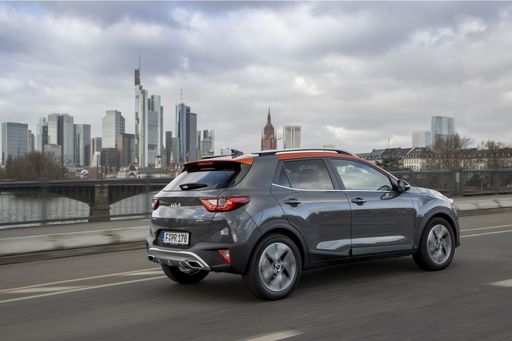 @ press.kia.com
@ press.kia.com
 @ press.kia.com
@ press.kia.com
 @ press.kia.com
@ press.kia.com
 @ press.kia.com
@ press.kia.com

|

|
|
|
|
Costs and Consumption |
|
|---|---|
|
Price
14600 - 19000 £
|
Price
19400 - 25600 £
|
|
Consumption L/100km
4.9 - 5.5 L
|
Consumption L/100km
5.5 - 5.7 L
|
|
Consumption kWh/100km
-
|
Consumption kWh/100km
-
|
|
Electric Range
-
|
Electric Range
-
|
|
Battery Capacity
-
|
Battery Capacity
-
|
|
co2
110 - 124 g/km
|
co2
125 - 129 g/km
|
|
Fuel tank capacity
36 L
|
Fuel tank capacity
45 L
|
Dimensions and Body |
|
|---|---|
|
Body Type
Hatchback
|
Body Type
SUV
|
|
Seats
4 - 5
|
Seats
5
|
|
Doors
5
|
Doors
5
|
|
Curb weight
996 - 1099 kg
|
Curb weight
1195 - 1260 kg
|
|
Trunk capacity
252 L
|
Trunk capacity
352 L
|
|
Length
3670 - 3675 mm
|
Length
4140 mm
|
|
Width
1680 mm
|
Width
1760 mm
|
|
Height
1480 - 1483 mm
|
Height
1505 mm
|
|
Max trunk capacity
1050 L
|
Max trunk capacity
1155 L
|
|
Payload
344 - 423 kg
|
Payload
450 - 455 kg
|
Engine and Performance |
|
|---|---|
|
Engine Type
Petrol
|
Engine Type
Petrol, Petrol MHEV
|
|
Transmission
Manuel, Automatic
|
Transmission
Manuel, Automatic
|
|
Transmission Detail
Manual Gearbox, Automated Manual
|
Transmission Detail
Manual Gearbox, Dual-Clutch Automatic
|
|
Drive Type
Front-Wheel Drive
|
Drive Type
Front-Wheel Drive
|
|
Power HP
63 - 90 HP
|
Power HP
100 HP
|
|
Acceleration 0-100km/h
11.4 - 18.4 s
|
Acceleration 0-100km/h
11.3 - 12.4 s
|
|
Max Speed
143 - 175 km/h
|
Max Speed
176 - 179 km/h
|
|
Torque
93 - 172 Nm
|
Torque
172 - 200 Nm
|
|
Number of Cylinders
3 - 4
|
Number of Cylinders
3
|
|
Power kW
46 - 66 kW
|
Power kW
74 kW
|
|
Engine capacity
998 - 1197 cm3
|
Engine capacity
998 cm3
|
General |
|
|---|---|
|
Model Year
2024
|
Model Year
2024 - 2025
|
|
CO2 Efficiency Class
C, D
|
CO2 Efficiency Class
D
|
|
Brand
Hyundai
|
Brand
Kia
|
Is the Hyundai i10 offered with different drivetrains?
The Hyundai i10 is offered with Front-Wheel Drive.
The prices and data displayed are estimates based on German list prices and may vary by country. This information is not legally binding.
